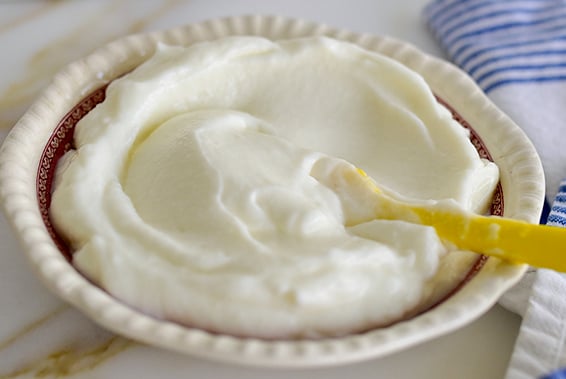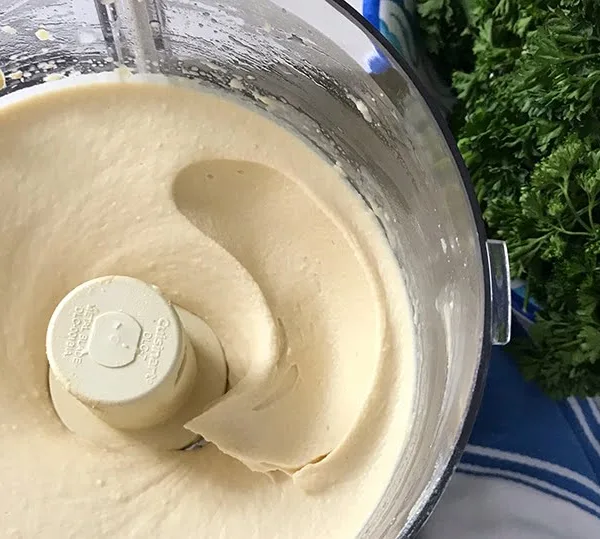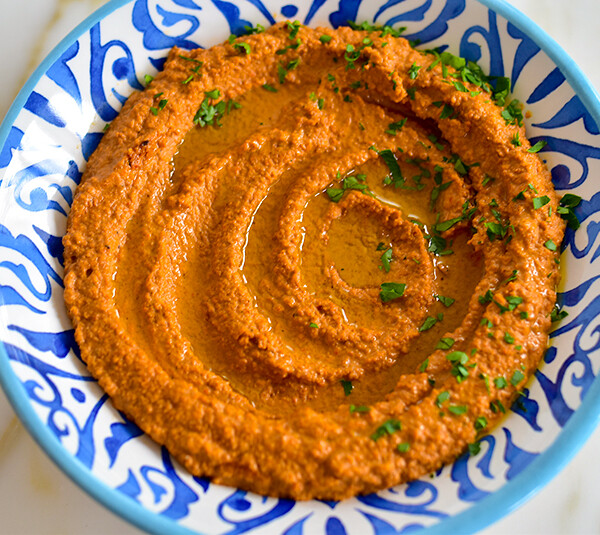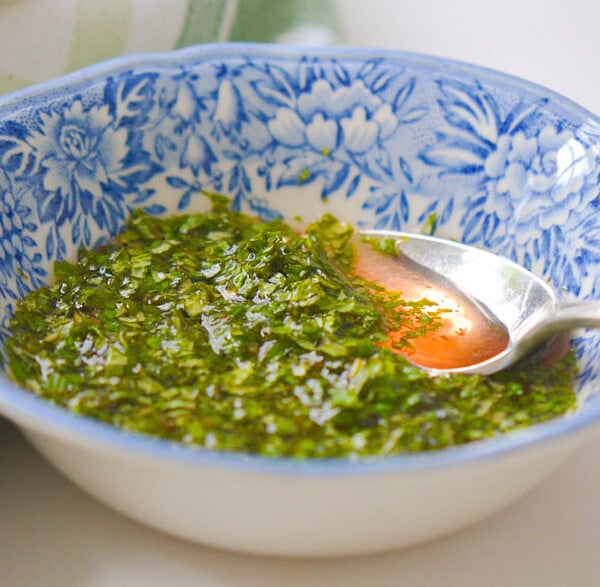This post may contain affiliate links. Please read our disclosure policy.
Pistachio pesto is a fun twist on the classic basil pesto! The rich, bright flavor of pistachios shines through with just a handful of other ingredients. Homemade pesto is so much better than store-bought and comes together in minutes!
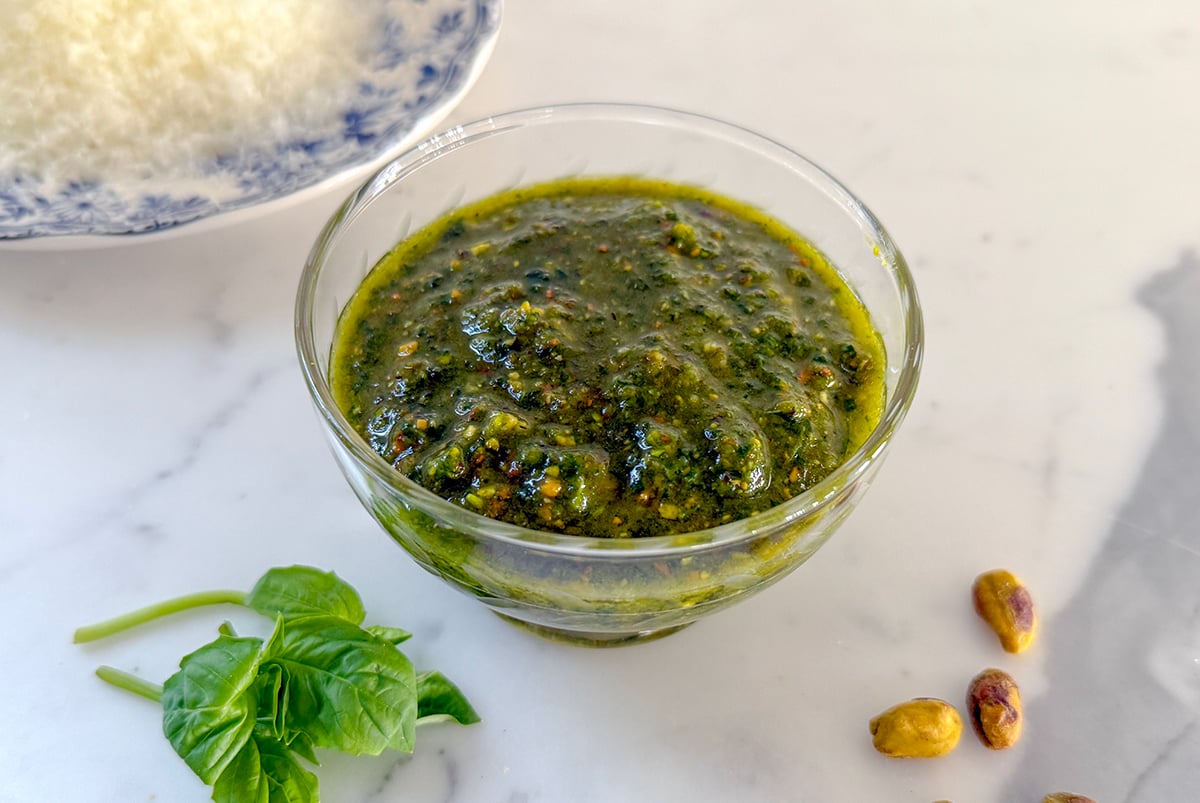
I make pesto with all kinds of nuts, from traditional pine nuts to cashews, walnuts, and my new favorite: our beloved pistachios. I stumbled on the idea really, making pesto recently and finding only pistachios in my pantry (which is very unusual for me; I typically keep many nut varieties in my freezer at all times!). What a result: a vibrant, flavorful sauce with a creamy texture and that unique nutty pistachio flavor that we love so much. The fact that pistachios are rich in healthy fats and antioxidants with numerous health benefits is just a bonus!!
Made with pistachios and handful of fresh ingredients like garlic, extra virgin olive oil and lots of fresh basil, this homemade pesto comes together quickly and tastes light years better than jarred versions. Pesto is such a versatile sauce that can elevate everything from pasta to salads. This is a simple pistachio pesto recipe that’s quick, delicious, and perfect for adding a serious burst of flavor to your favorite dishes.

Ingredient Notes
Making the perfect homemade pistachio pesto starts with high-quality, fresh ingredients, especially because there are so few of them. The key ingredient here is pistachio nuts—you can use raw pistachios for bright color, but because we get vibrance from the fresh basil, I use roasted pistachios instead. You can find them at your grocery store easily and they have great flavor.
The other traditional basil pesto ingredients include loads of fresh basil leaves, garlic cloves, olive oil, and parmesan cheese. For an authentic touch, add pecorino romano cheese instead of or alongside parmesan for a slightly different, more complex salty kick.
Extra-virgin olive oil is essential for making the sauce smooth, lush, and cohesive; aim for enough olive oil to create a smooth paste. More oil can always be added later when using the pesto. Same goes for salt–use a pinch of salt while making the pesto, then add more as needed when you use the pesto sauce in various ways.

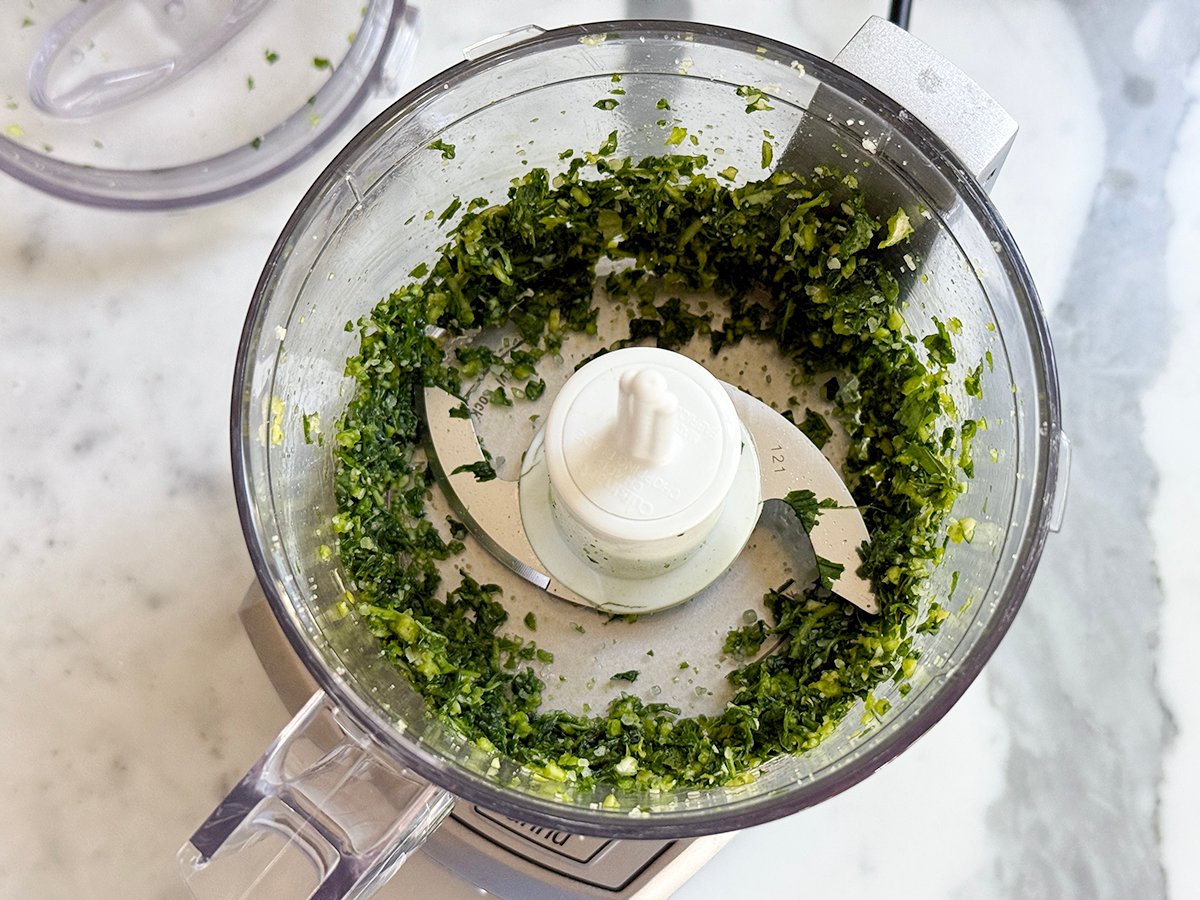
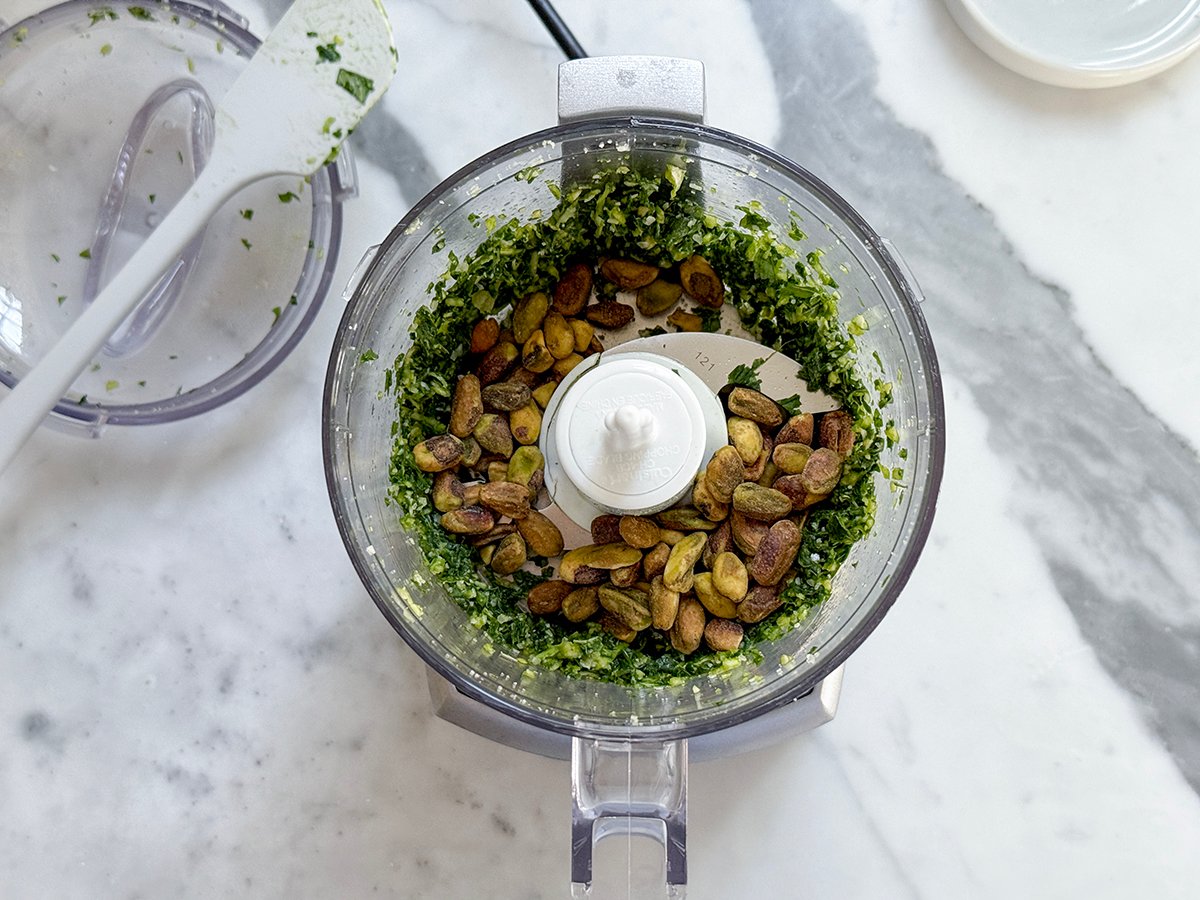
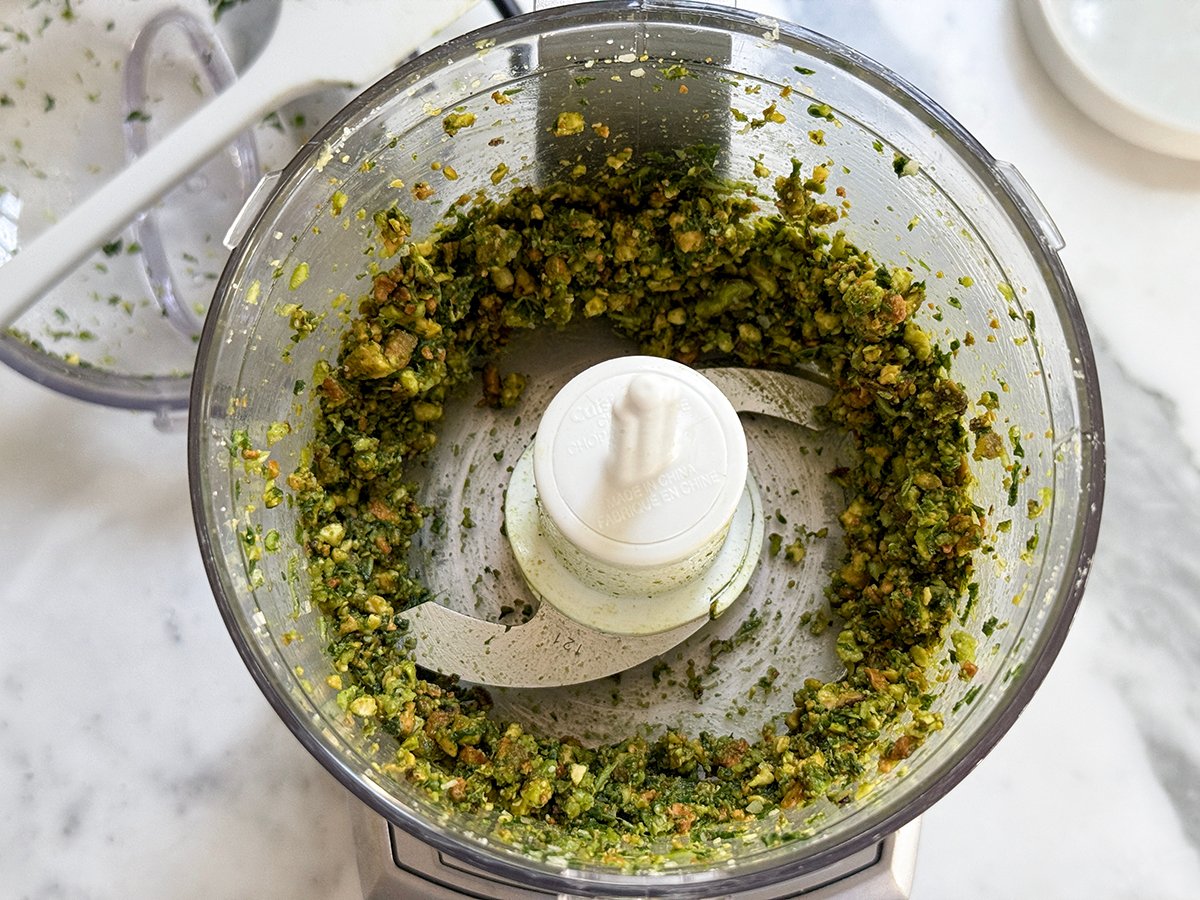
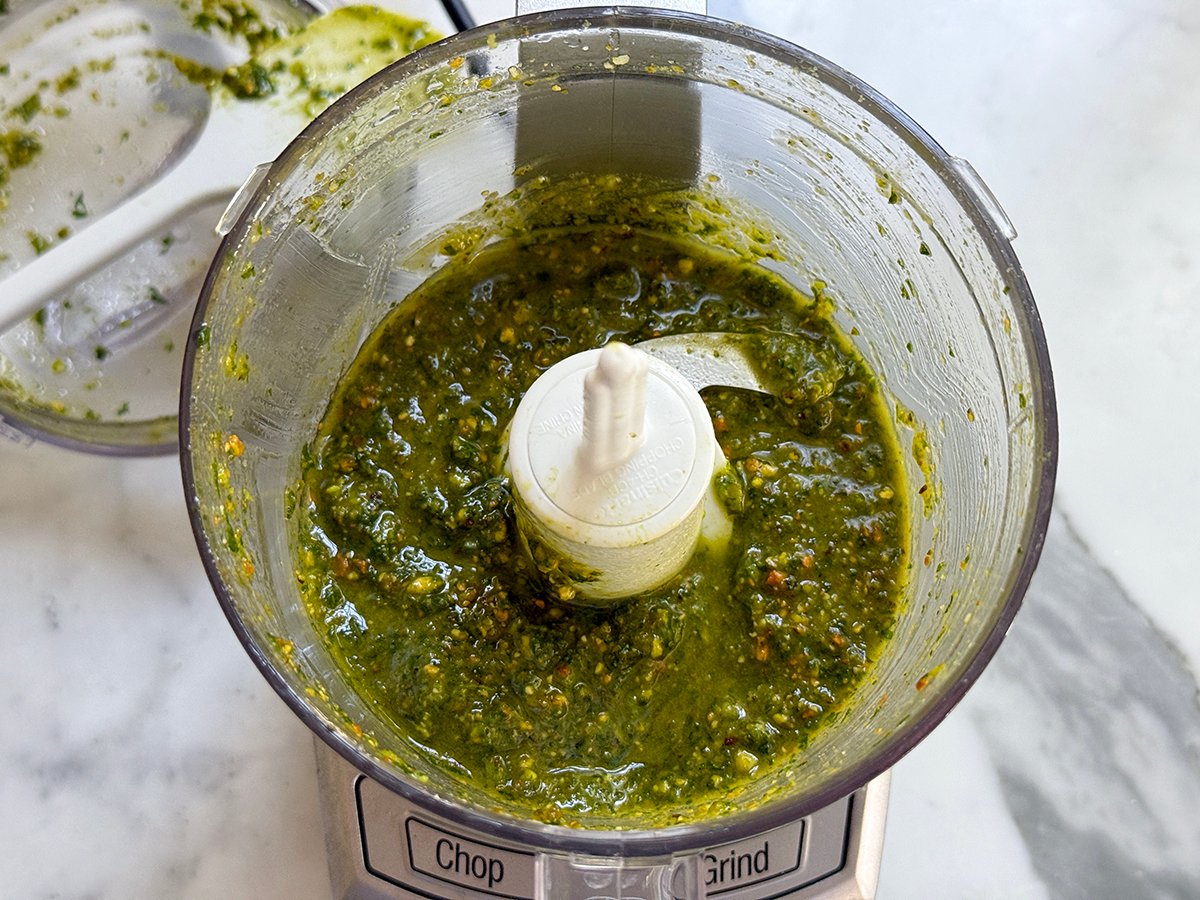
Tips for Successful Pesto
Making great pesto requires a few basic techniques to ensure the mixture turns out smooth and flavorful. A food processor is especially useful for making pesto. I like to use this mini-prep processor because I don’t make giant batches at once (and it’s so useful to make toum garlic sauce). It is easier to process 2-3 cups of basil and the other ingredients with the smaller bowl of a prep processor.
Start blending the basil leaves, garlic cloves, and salt. It is easier to blend these few ingredients, then the pistachios with them, before adding any liquid (the oil).
Stopping to scrape down the bowl is an essential part of the process here, otherwise too much of the ingredients will remain on the sides of the processor bowl. Scraping down the sides of the bowl collects everything together so they can be further pulverized.
When adding the garlic cloves, make sure they are from fresh garlic heads that are firm and without green sprouts, for smooth flavor. Slice the cloves in half and remove the green germ if needed. You can adjust the amount of garlic based on your preference—more garlic for a punch, less for a subtler flavor.
For a traditional basil pesto flavor and vivid color, use plenty of fresh basil leaves–pluck 40 to 50 leaves, knowing that as they are pulverized they chop down substantially. Add in a different herb like mint or parsley to supplement the basil, but don’t replace it entirely.
To prevent the pesto from turning brown, store it in an airtight container with a thin layer of olive oil on top—this keeps the bright color and fresh flavor intact.
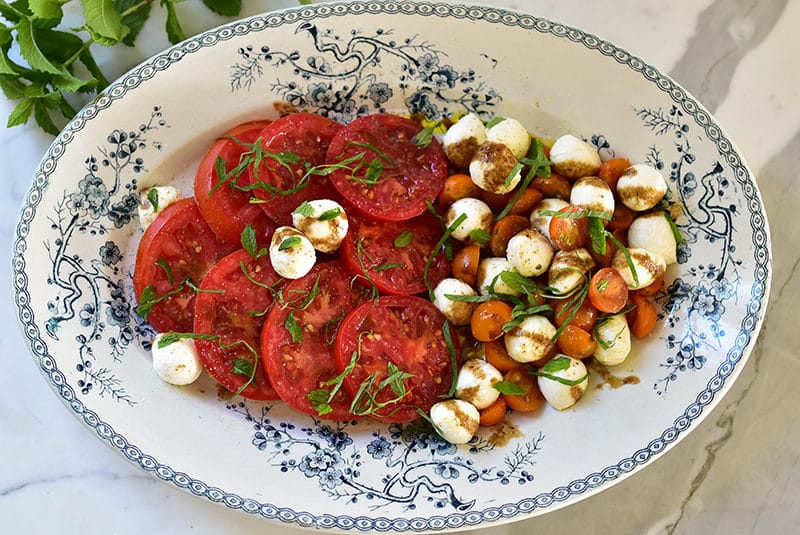
Ways to Use Pesto
Traditional pesto is a versatile sauce that can elevate many dishes beyond the classic pesto pasta, which is made by toss a few spoonfuls hot pasta along with some of the pasta cooking liquid for a quick, very delectable meal. I love to add cooked chicken to penne pasta with pesto and serve that either warm or as a cold chicken pesto pasta salad.
Use it as a salad dressing by thinning it out with a little extra olive oil and a squeeze of lemon juice or rice vinegar.
Spread pesto on slices of bread or toast, to eat as is or boost the flavor of your grilled cheese.
It’s a great way to jazz up a Caprese salad, by simply spooning pesto over slices of fresh mozzarella and tomatoes. For a fun twist, dollop homemade pistachio pesto on pizza or mixed into dips for a flavorful snack with veggies, crackers, pita chips or pita bread. Stir some into rice or quinoa salads, or serve alongside slices of bread as part of a mezze platter. It’s excellent as a flavor maker for shakshuka! Stir it into the tomatoes or dollop on top, or both.
Pesto is also fantastic as a topping for roasted vegetables or grilled meats. Its vibrant green color and fresh herbaceous flavor will instantly brighten up any plate.
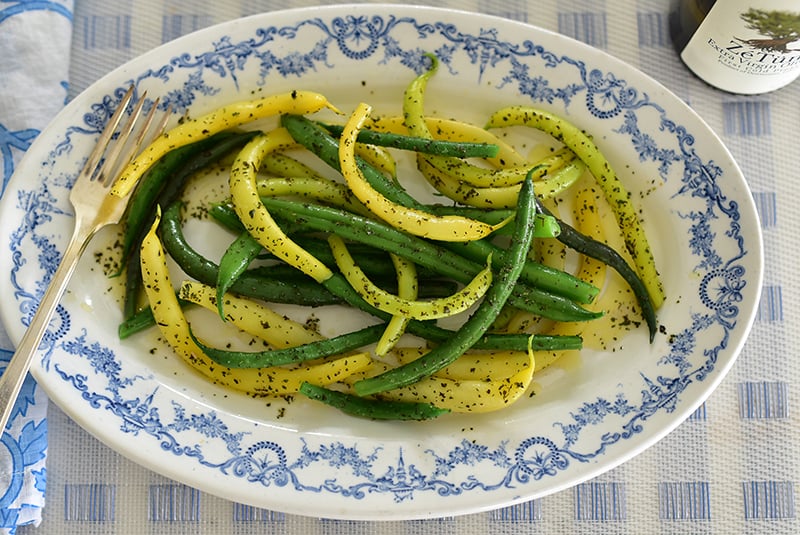
Make Ahead and Storage
Making large batches of homemade pistachio pesto is a great thing to do, especially during the harvest season for basil if you’re a gardener, because it freezes well and can be stored for months. I like to stir in the parmesan when I’m ready to use the pesto in a recipe rather than from the start because sometimes I want pesto with no cheese in it!
You can freeze pesto in several ways: try any airtight container such as a jar or in zip-top freezer bags. For smaller portions, use ice cube trays to freeze individual servings—you can pop out a cube whenever you need a quick spoonful of pesto to liven up whatever you’re making.
To store in the fridge, use a tight-fitting lid container or press a piece of plastic wrap over the surface of the pesto to prevent browning. It can last for about a week or more.
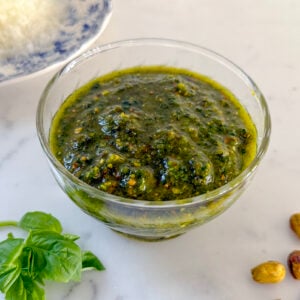
Pistachio Pesto Recipe
Equipment
Ingredients
- 2-3 cups fresh basil, about 40 leaves
- 3 cloves garlic
- 1 teaspoon kosher salt
- 1/3 cup pistachios, roasted or raw
- 1/3 cup extra virgin olive oil
- 1/3 cup parmesan cheese, grated
Instructions
- In the bowl of a food processor, add the basil, garlic, and salt. Process until the ingredients are finely chopped, stopping to scrape down the bowl a few times as you go.
- Add the pistachios and process until they are finely ground, again stopping to scrape down the bowl as you go. You can leave the nuts more coarsely ground if you prefer.
- With the processor running, add the oil in a steady stream through the drip hole in the top of the processor. Process until the pesto is glossy and fairly smooth. Stop and scrape down the bowl once or twice.
- Transfer the pesto to an airtight container and store in the refrigerator or freezer. When you're ready to use the pesto, stir in the parmesan cheese just before serving.
Nutrition
Nutrition information is automatically calculated, so should only be used as an approximation.
More Pistachio recipes
For the essence of pistachios in an ingredient that is useful in lots of ways, make your own Pistachio Cream. It’s useful in Pistachio Gelato, my DIY Dubai Chocolate Bar recipe, and more!
Pistachios make a wonderful filling in Lebanese Baklawa, and look and taste gorgeous in Pistachio Baklawa Nests.
Pistachios top my Rhubarb Tart with Pistachios beautifully!
